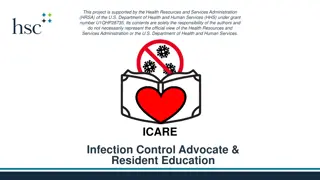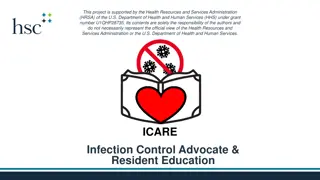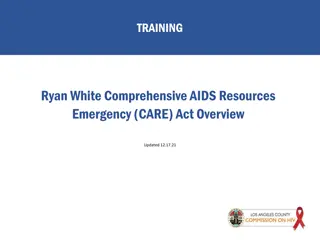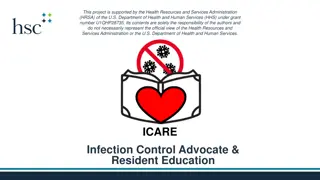
Understanding Long-Term Care and Dementia Challenges
Explore the benefits and challenges of working in long-term care settings. Discover what matters most to nursing home residents and their families. Delve into common issues seen in long-term care and learn how to manage patients with dementia effectively in LTC facilities.
Uploaded on | 0 Views
Download Presentation

Please find below an Image/Link to download the presentation.
The content on the website is provided AS IS for your information and personal use only. It may not be sold, licensed, or shared on other websites without obtaining consent from the author. If you encounter any issues during the download, it is possible that the publisher has removed the file from their server.
You are allowed to download the files provided on this website for personal or commercial use, subject to the condition that they are used lawfully. All files are the property of their respective owners.
The content on the website is provided AS IS for your information and personal use only. It may not be sold, licensed, or shared on other websites without obtaining consent from the author.
E N D
Presentation Transcript
Dementia and Long Term Care Ari Berman
Why work in long term care? Benefits of working with older adults Focus on quality of life and what matters most Consistent warm interactions with patients and their families Interest in dementia Leadership opportunities
Leadership opportunities Interdisciplinary work Modeling Inspiring a shared vison Promoting continuous improvement Mentorship and education Opportunity to uplift and nurture
What is most important to nursing home residents and their families? Staffing Staff attitude Communication Continuity Routine and predictability Control of decision-making process Dignity Activities Culture
Challenges Challenges in long-term care Staffing Recruitment Retention Competition Staffing mandates Stress/burn out/frequent death Issues with dignity Working conditions Expectations
Challenges Challenges in long-term care continued, cont d Lack of access to specialty care, lack of phlebotomy Higher acuity patients Lack of funding, financial pressures Polypharmacy and acute care management Challenging needs of residents Multidrug resistant infections Heavily regulated Quality metrics Disparate electronic medical records
Common issues seen in long-term care FUNCTIONAL DECLINE COGNITIVE DECLINE WEIGHT LOSS INCONTINENCE SKIN FALLS DEPRESSION POLYPHARMACY BREAKDOWN
Behaviors Elimination Monitoring dementia patients Food intake Functional status Pain Weight
Managing patients with Dementia in LTC MANAGE MEDICAL AND BEHAVIORAL RISKS AND COMPLICATIONS RELATED TO THEIR DEMENTIA OPTIMIZE FUNCTION AND QOL MANAGE FUNCTIONAL DEFICITS ADDRESS PERTINENT PSYCHOSOCIAL ISSUES ADDRESS SPIRITUAL ISSUES CONSIDER PALLIATIVE CARE ENGAGE STAFF
Dementia Care Considerations Person centered care: Recognizing the individual behind the disease Communication: validation and reminiscence Safety: Clear signs and uncluttered spaces Caregiver support: education, respite and emotional support
Dementia: memory loss, aphasia, apraxia, agnosia, behavioral symptoms, depression, apathy, aggression, sensory impairment, pain, delirium Challenges to care interactions Staff barriers: lack of education and training, focus on task completion, multiple time commitments Facility barriers: noise, lack of personal space, rooms, poor lighting, lack of home like environment, lack of consistent staffing
Non pharmacologic management of dementia behaviors
They are reactive rather than proactive Why non pharmacologic approaches may fail Prescribed like medicine Not always person centered Superimposed on living environment
Tools and metrics used to assess quality MDS information about functional, cognitive, psychosocial status of residents as well as health conditions, meds and special needs Short term measures Long term measures CHAPS patient/family experience
Nursing home quality of care metrics Rehospitalizations Pressure ulcers Catheters Weight loss Infections Psychotropic Use Falls Vaccinations
Nursing home regulations Infection control and prevention Quality of care metrics Antibiotic stewardship Interdisciplinary team
QAPI QAPI - - Quality Assurance Process Improvement Interdisciplinary approach to proactively prevent complications Identify, communicate and evaluate changes in status Establish processes
Future STAFFING SOLUTIONS FINANCIAL PAYMENT MODELS MINDFUL CARE APPROACH FOR PATIENTS AND STAFF CUTTING EDGE TECHNOLOGY TO OPTIMIZE CARE AND DELIVERY






















